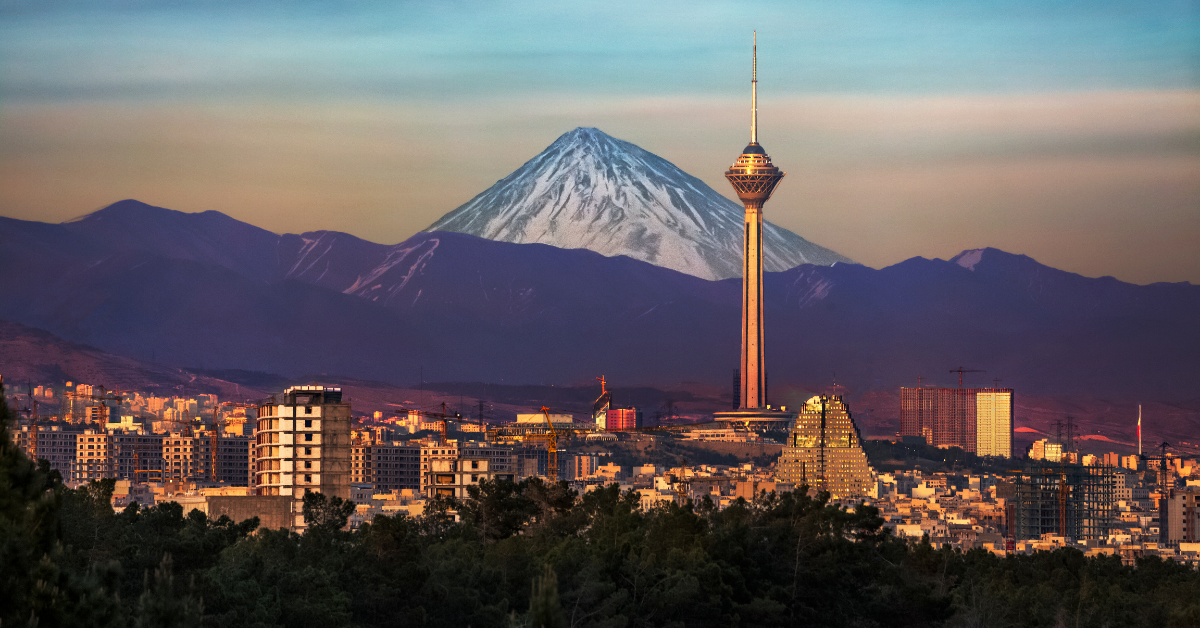In Japanese, Tehran is sometimes written as “丁蘭.” This unique notation not only reflects the city’s sound but also conveys cultural meaning. For Japanese people, this kanji creates an elegant and sophisticated image, shaping how Tehran is remembered as more than just a foreign capital.
The Kanji Representation of Tehran: “丁蘭”
The representation “丁蘭” is based on phonetic transcription into kanji. It does more than simply reproduce the sound—each character adds an image that influences perception of the city.
- “丁” suggests orderliness and composure, evoking a sense of structure in the city.
- “蘭” symbolizes nobility and fragrance, adding an elegant, exotic nuance.
Kanji representations were traditionally used in Japanese to write foreign place names. While the usage has declined, examples can still be found in literature and historical records. Through this, Tehran is perceived by Japanese speakers as a refined and cultured city, beyond its mere sound.
Japanese Perceptions of Tehran
Tehran is not a city that frequently appears in the daily lives of Japanese people. However, through news coverage, cultural exchanges, and travel accounts, certain impressions have taken root.
Japanese Impressions of Tehran
| Perspective | Image | Description |
|---|---|---|
| Politics / International Relations | A hub of the Middle East | Often reported as a stage for international negotiations |
| Culture | A symbol of Persian heritage | Carpets, poetry, and architecture portray it as an artistic city |
| Tourism | A city full of exotic charm | Bazaars and palaces attract curious travelers |
| Society | Complex and multifaceted | Tradition and modernization coexist, reflecting diversity |
| Sports | A city passionate about soccer | Known for national team matches and club activities |
Although media often highlight political tension, cultural and personal exchanges also portray Tehran as a warm and vibrant city.
History of Tehran and Its Impression in Japan
Tehran became the capital at the end of the 18th century and has since been the political and economic center of Iran. For Japanese people, its image was strongly shaped by the 1979 Iranian Revolution, after which it became widely recognized as a “stage of politics.”
At the same time, Japan and Iran have shared ties through trade and culture since ancient times. Persian carpets and the works of poet Rumi have influenced Japanese intellectuals, strengthening the image of Iran as a nation with “artistic and profound culture.” This dual perception has led Japanese people to see Tehran as a “complex and deeply layered city.”
Tehran as a Tourist City
Modern Tehran is also attractive as a tourist destination. Historical landmarks coexist with contemporary urban landscapes, offering visitors diverse experiences.
Major Tourist Attractions
| Name | Feature | Reason Popular Among Japanese |
|---|---|---|
| Golestan Palace | The essence of Persian architecture | Intricate decoration and gardens evoke exotic elegance |
| National Museum | Exhibits ancient artifacts | A must-see for history enthusiasts |
| Grand Bazaar | Lively market culture | Experience daily life through crafts and spices |
| Azadi Tower | Symbol of modern Tehran | A photogenic architectural landmark |
In recent years, Tehran’s café culture and art scene have also drawn attention, making it a youthful and energetic city. Tourism is no longer limited to historical exploration but also about experiencing contemporary daily life.
Tehran as a Sports City
One cannot talk about Tehran without mentioning sports. Soccer, in particular, is deeply ingrained in people’s lives and unites the city in passion.
Sports and Daily Life
| Sport | Feature | Position in Tehran |
|---|---|---|
| Soccer | Iran is one of Asia’s top national teams | Azadi Stadium is a symbol of this passion |
| Wrestling | A traditional sport | Rich history of achievements in world championships |
| Volleyball | Rising in international competition | Popular among the younger generation |
Azadi Stadium is among the largest in the Middle East, accommodating tens of thousands of fans. On match days, the entire nation comes together in enthusiastic support. For Japanese people, matches against Iran have become opportunities to recognize Tehran’s intense sports culture.
Diversity of Culture and Daily Life
Tehran is also a city where diverse cultures coexist.
Culture and Everyday Life
| Field | Feature | Appeal for Japanese Visitors |
|---|---|---|
| Cuisine | Rich dishes such as kebabs and stews | Offers unique flavors beyond Japanese food culture |
| Art | Carpets, poetry, and visual arts thrive | Shares delicate sensibilities with Japanese traditions |
| Social Structure | A young population dominates | Vibrant energy and sense of future potential |
Beyond political headlines, the city’s everyday life reveals warmth and resilience. This makes Tehran not only a city of strength but also one of human warmth.
Conclusion
The kanji representation “丁蘭” is not merely a phonetic transcription but also reflects the dignity and cultural richness of the city. For Japanese people, Tehran is at once a political stage, a cultural treasure, a tourist destination, and a sports hub.
While political reporting often frames the city in one dimension, the reality of Tehran is that of a multifaceted and appealing city. Experiencing its cultural heritage, the fervor of sports, and the warmth of everyday life allows Japanese people to understand Tehran as “a complex and profoundly fascinating city.”
The expression “丁蘭” will continue to evoke a special resonance for Japanese people, keeping Tehran in their imagination as more than just a place on the map.






